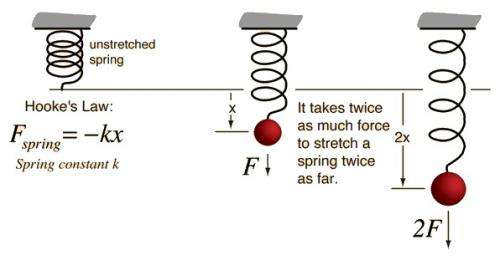From Wikipedia:
Hooke’s law is a law of physics that states that the force (F) needed to extend or compress a spring by some distance (x) scales linearly with respect to that distance—that is, Fs = kx , where k is a constant factor characteristic of the spring (i.e., its stiffness), and x is small compared to the total possible deformation of the spring.
Hooke’s Law states the force needed to extend or compress a spring by a distance scales linearly with respect to that distance. The spring constant, k, is representative of how stiff the spring is.

The spring constant can be determined based on four parameters (think of these as parameters to either increase/decrease the stiffness of the spring):
- Wire diameter : the diameter of the wire comprising the spring
- Coil diameter : the diameter of each coil, measuring the tightness of the coil
- Free length : the length of the spring when at rest
- Number of active coils : the number of coils that are free to expand and contract
The spring constant is directly proportional to coil diameter (i.e. increase coil diameter, increase spring constant), and inversely proportional to # of active coils, free length, and the spring diameter.
The material making up the spring also plays a role in determining the spring constant, along with other physical properties of the spring.